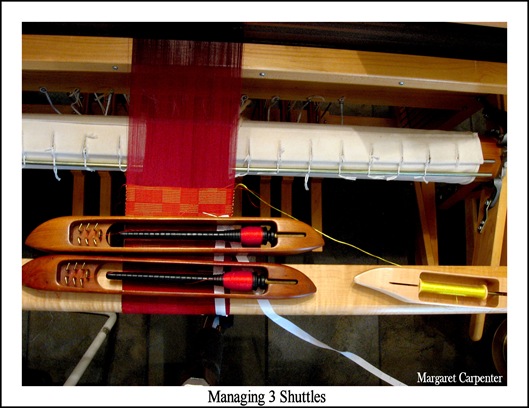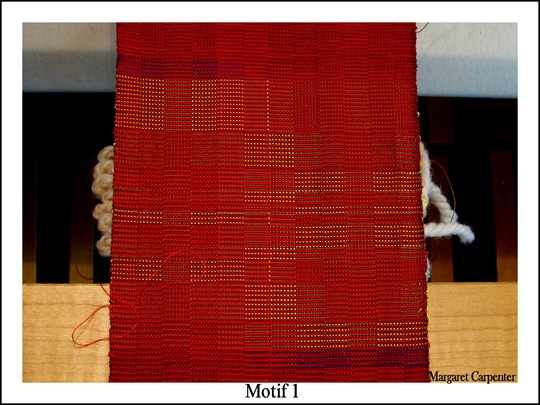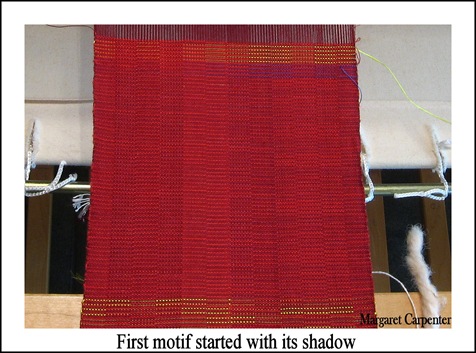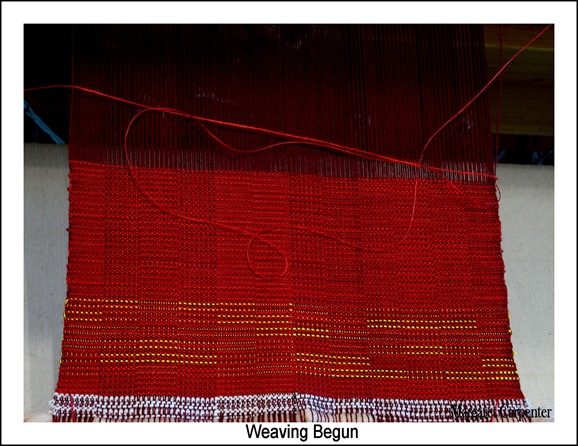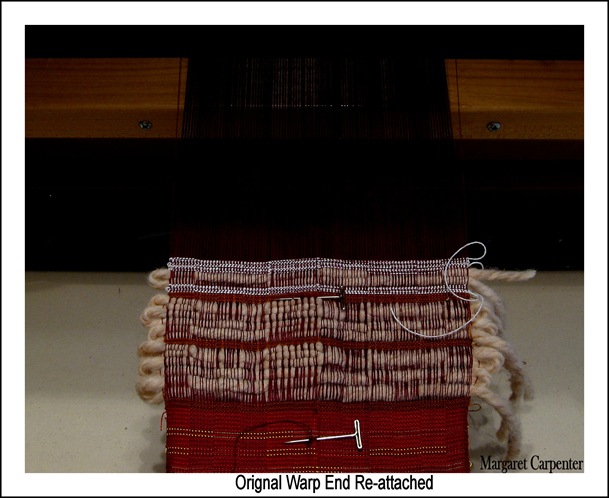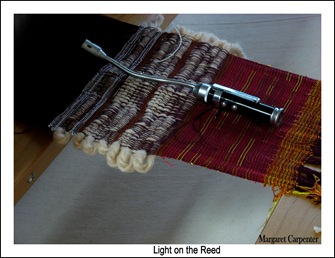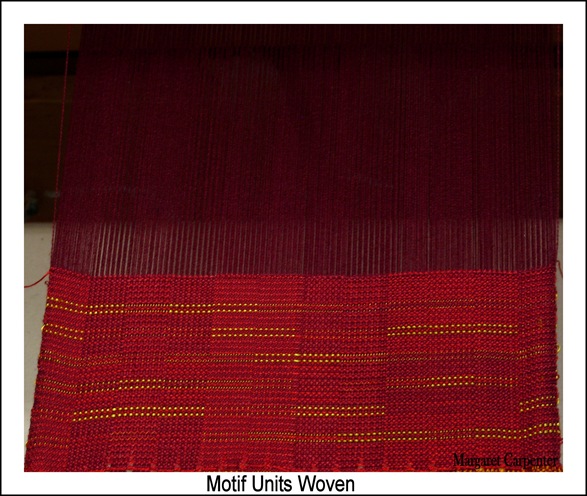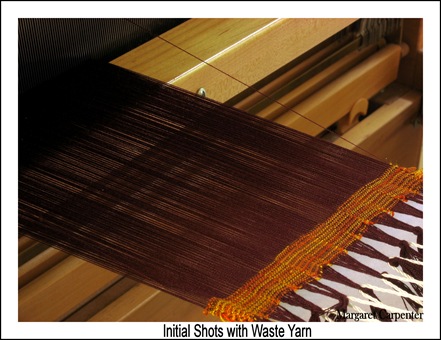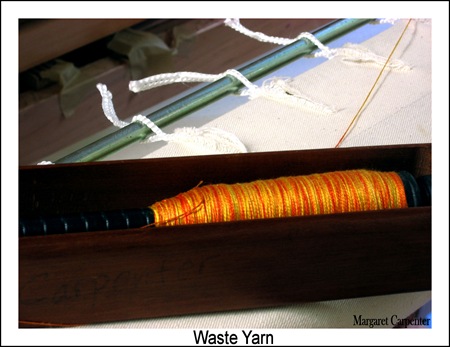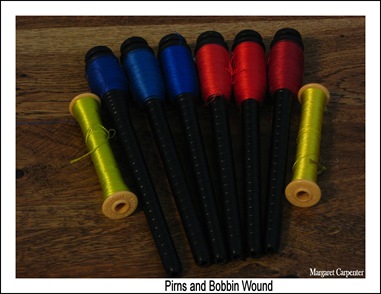Posted by Peg in South Carolina
The two shuttles with red bobbins weave the background. In this area, where I am weaving the gold motifs, I regularly alternate the two reds. I pick the front one to weave with, then place it behind the second shuttle, which becomes the front one and so the one I pick up next.
This may seem like an inordinate amount of work to some. The reds are so close in value that it hardly seems to matter. Subtlety matters. In this case a barely perceived increase in liveliness occurs, a liveliness already there by virtue of the threading.
I used to weave with the fell very close to the front of the loom. Then I could not keep the two shuttles this way because there was no room. So I put a covered board on each side for a place to rest the shuttles.
The shuttle to the right with the gold weft is the pattern shuttle. I weave it only once in each group of group treadles. Consequently, I do not need so much yarn so I put it on a regular shuttle. Not the Bluster Bay end feed shuttles which hold a great deal of yarn.
Still, it is clear that what I am weaving does not require a great deal of yarn, hence those pirns are not even half full (I’ve not woven even 24” yet!).
Also visible is the measuring tape I use pinned onto the cloth.
Related Posts:
Where is My Fell?
Learning the Hard Way
Shuttle Rests
Managing Multiple Shuttles
“Managing 3 Shuttles” was written by Margaret Carpenter for Talking about Weaving and was originally posted on May 27, 2009. ©2009 Margaret Carpenter aka Peg in South Carolina
